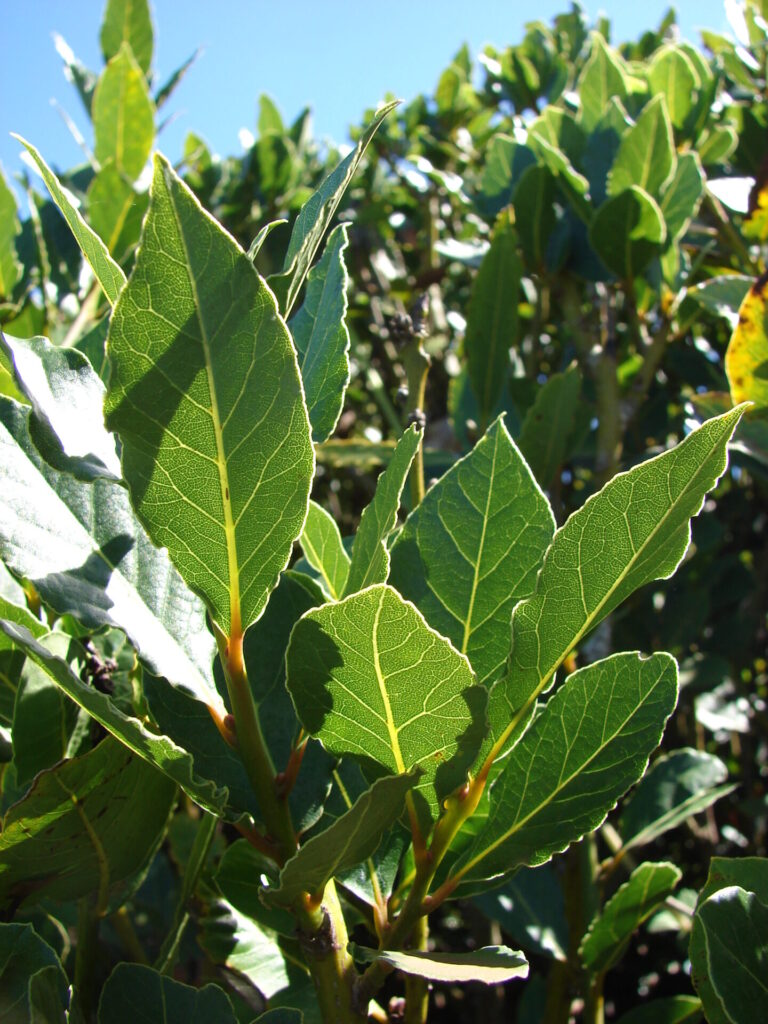Delicious, fragrant bay leaves come from the bay laurel, a perennial shrub or tree with pale yellow
flowers and black fruit, attractive olive-to- reddish bark, and dark leathery leaves.
Bay leaves are incredibly versatile. The herb’s flavor complements rice dishes, soups and stews, Catalan and Greek recipes, and Creole cuisine. Bay leaf also works in pantries to repel grain beetles and silverfish, and it lends its aroma to candles, holiday wreaths, and potpourris.
Common Names: Bay Leaf, Bay laurel, Grecian laurel, Sweet bay, and California laurel
Plant Type and Size: Evergreen Tree/Shrub (trees can grow up to 25 feet).
Hardiness Zones 8 and above, if you live in zones 8-11, you can grow a 25 to 60 foot tall bay laurel tree outdoors, and it will give you more bay leaves than you will ever need in a lifetime. They are beautiful and aromatic, so if you live in those zones, it might be worth growing them.






